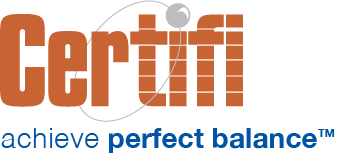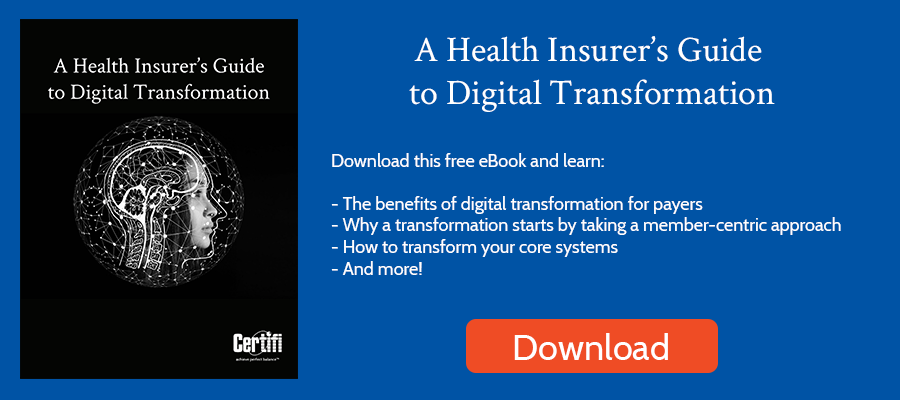Back in the early 90s, grunge dominated the music airwaves, Seinfeld was popular on TV, and plugging something as simple as a mouse into a PC didn’t make the mouse usable. Instead, you needed to install software to get the mouse to work. It was a world of minor inconveniences.
Why? Because the device and the PC didn’t all use a standard set of instructions that enabled the mouse to be plug and play. That mouse/PC interaction is similar to what faced the healthcare industry for decades: lots of data sitting in provider, payer, and third-party technology databases that didn’t easily talk to each other, leading to poor data exchange, expensive integrations, and ultimately bad consumer experiences.
Enter Fast Healthcare Interoperability Resources (FHIR, pronounced “fire”), a data interoperability standard developed by the non-profit Health Level Seven International (HL7) designed to standardize health care data exchange.
What is FHIR?
FHIR essentially serves to connect complex healthcare systems by taking a modern approach to connecting data elements, or resources. HL7 built FHIR to use common Internet standards — like taking a REST approach and including common web standards like XML, JSON, HTTP, and OAuth — to describe how users can share resources within an electronic health record (EHR). Plus, FHIR makes data records human-readable, making it easier for developers to understand the data and resources (more on those later).
In theory, creating a data standard should be easy. In practice, it can be difficult. Take the example of a provider’s data needs vs those of an insurer. As a result, the standard gets bloated because defining the standard to fit the needs of every entity that uses it can be difficult. FHIR solves that problem by leveraging a framework to extend the existing resources using profiles.
What is HL7?
Health Level Seven International (HL7) is a non-profit organization that provides frameworks and standards for the exchange of electronic health information. Founded in 1987, HL7 has more than 1600 members in more than 500+ corporate members. HL7 is the organization responsible for creating the FHIR standard.
Why did HL7 Create the Standard?
HL7 had been delivering standards for exchanging health information since the late 1980s. But a lot had changed from a technology perspective since HL7 developed the preceding standards. As a result, preceding standards — HL7v2 and HL7v3 — had become dated and cumbersome to use. In late 2011 work began on a new standard that leveraged modern internet protocols.
What are Resources?
HL7 organized FHIR by resources — like a patient, a practitioner, or even an appointment — that hold data related to the resource. For example, a user can leverage a patient resource to define patient data. FHIR focuses patient resource attributes on demographic information like name, birthdate, address, language preference, etc. You can find a list of all the FHIR resources here: https://www.hl7.org/fhir/resourcelist.html.
How does HL7 Revise FHIR?
HL7 creates FHIR through consensus, which means a group thoroughly reviews each release. As a result, releases can take time — typically 18-24 months — to be ready for deployment. The standard uses five status levels to describe the level of stability and implementation:
- Draft — The group has not reviewed draft changes and users should view them as incomplete. Users should not consider them safe for implementation.
- Trial Use — The group has reviewed trial use content and considered it implementable, but users haven’t widely implemented the content. It may contain known issues.
- Normative — HL7 considers this content stable. While changes are possible, they will occur infrequently.
- Informative — This content is, as the name implies, for informational purposes. Things like tables of contents, examples, and implementer advice fall in this category.
- Deprecated — HL7 considers this content outdated and they may withdraw the content in the future.
What is SMART on FHIR?
Developed by the Boston Children’s Hospital Computational Health Informatics Program, SMART began as a competing data standard but pivoted once FHIR gained traction. Today, SMART standardizes the process for interaction with FHIR, building on the FHIR data standards. It outlines how an app will be launched and standardizes the security used by third parties when exchanging data with other systems.
What does Da Vinci Have to Do With FHIR?
The Da Vinci project is designed to leverage FHIR to help payers and providers better collaborate, specifically to help improve value-based care. Unlike FHIR itself, the Da Vinci project is a private collaboration between payers and providers. To date, the Da Vinci project has created several use cases designed to create corresponding data requirements and then use that information to create standards for implementation guides and software code.
The Payer Data Exchange is an example of one such use case. The Payer Data Exchange is designed to provide payer data to providers in the form of FHIR resources. Though we won’t go into great detail here, the Centers for Medicare and Medicaid Services (CMS) released an interoperability and patient access rule in 2020 that requires payers to make claim, encounter and clinical data available should a patient request that data be sent to providers and other payers.
The Payer Data Exchange is in part designed to help payers comply with this rule by providing an implementation guide based on this final rule.
How are Health Insurers Using FHIR?
The insurer Guidewell is using an FHIR-based payer data exchange to provide information for a member’s scheduled appointment. An example: If a patient hasn’t received a recommended vaccination, Guidewell will leverage an FHIR-based data exchange to push that information to the provider’s electronic medical records so the doctor can ask the patient if they would like the vaccination.
Guidewell is also piloting the use of FHIR for patient monitoring. The pilot uses devices like blood pressure monitors to electronically transmit data to Guidewell. Nurses then receive real-time alerts and will contact the member to take action if warranted.
Cambia Health Solutions, meanwhile, has partnered with MultiCare Connected Care to exchange medication reconciliation data. As a result, MultiCare clinicians will be able to see medication data from Cambia directly in the electronic health record. Cambia is also working with Oregon Health & Sciences University to streamline the prior authorization process.
Certifi’s health insurance premium billing and payment solutions help healthcare payers improve member satisfaction while reducing administrative costs.



